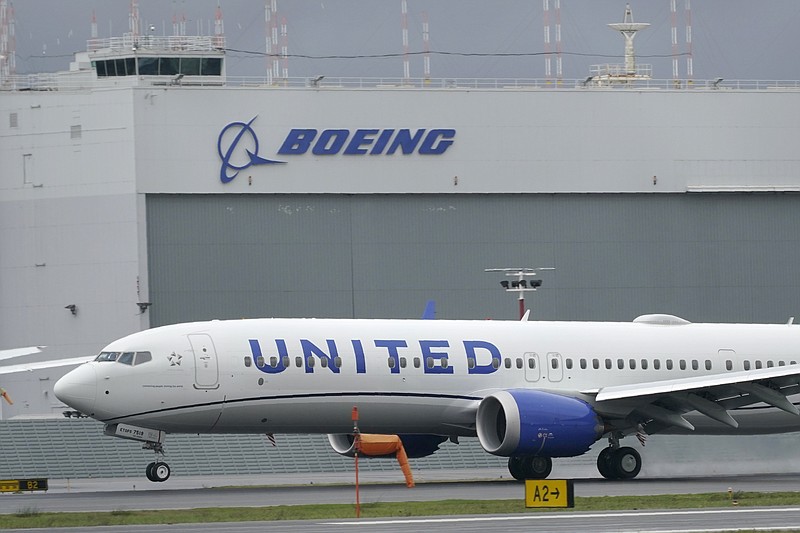United Airlines is making one of the largest orders ever for commercial airplanes in an aggressive bet that air travel will rebound strongly from the pandemic.
United said Tuesday that it will buy 200 Boeing Max jets and 70 planes from Europe's Airbus so that it can replace many of its smallest planes and some of its oldest and have room to expand its fleet.
It's the biggest order in United's history and the biggest by any U.S. carrier since American Airlines ordered 460 Boeing and Airbus jets in 2011.
To support the new planes and the service they will provide, United expects to add 25,000 jobs nationwide, including up to 5,000 in Newark, N.J., and 4,000 in San Francisco.
At list prices, the deals would be worth more than $30 billion, although airlines routinely get deep discounts. Figures from Ascend by Cirium, which tracks aircraft values, would put the deal around $15 billion. United declined to disclose financial terms.
Combined with previous orders, United expects to add about one new plane every three days in 2023, up from just over one a month next year. That is an ambitious amount of growth for an airline that lost $7 billion last year, when passenger traffic plunged 69%.
The plans signal the airline's intention to step up competition with Delta Air Lines and American Airlines for premium-seat customers, who demand more creature comforts and typically generate an outsize portion of industry profits. United also will have the new planes to reduce its use of smaller regional jets during an anticipated rebound in corporate demand, which is still stuck at less than half the pre-pandemic level.
"Business travel is going to come back at 100% and everything we see every week is making us more certain," Scott Kirby, United's chief executive, said ahead of the fleet announcement.
By 2026, the larger-plane strategy will boost United's seats for each departure by 30% compared with 2019 levels. The gain will be about 75% for premium berths per North American departure. The increased seat count in United's new fleet will lead to an 8% drop in costs for each seat flown a mile, Kirby said.
U.S. airlines needed billions of dollars in federal aid and private borrowing to stay afloat last year, but the carrier is starting to see blue sky through the pandemic clouds. The number of people flying in the U.S. tops 2 million on many days now -- not quite back to 2019 levels, but a turnaround from the days of fewer than 100,000 flyers in April 2020.
United said that it expects to make money in July after excluding certain costs, although Wall Street doesn't expect United to earn an adjusted profit until the second quarter of next year, according to a FactSet survey of analysts.
United said that it ordered 150 Boeing 737 Max 10s jets, 50 smaller Max 8s, and 70 Airbus A321neos, which usually seat 220 passengers in economy and premium. United took its first delivery of a Max 8 on Monday and expects to receive the first of the other two planes in 2023.
The larger planes from Airbus will be particularly valuable in San Francisco and Newark, N.J., where limited runways prevent United from adding many more flights, said Andrew Nocella, United's chief commercial officer.
The airline currently has just over 800 planes in its fleet.
Combined with previous deals, United now expects to take delivery of about 500 new planes between now and 2026. Nocella said 300 will replace many of the airline's 50-seat regional jets and older Boeing 757s, while 200 will be used to grow.
The new planes will have more premium seats and seat-back entertainment screens. United also plans to refresh the interiors of its current planes by 2025.
United said that it will sharply increase capital spending to pay for the new planes, from $4.2 billion next year to $8.5 billion in 2023. The airline is counting on rising revenue to lower its net debt from about $25 billion to less than $18 billion by 2026.
United's order also is a major boost for the world's two main aircraft makers, especially Boeing. The Chicago-based company saw orders plummet after Max jets were grounded after two crashes. On top of that, the pandemic has hurt sales at both companies.
Boeing "needs to play a bit of catch-up," and so it likely gave United a steep discount, said George Dimitroff, an analyst with Ascend by Cirium.
"From here forward, pricing will get firmer," Dimitroff said. "I think that United is probably taking advantage of the last of the good pricing."
Earlier this month, United announced a deal to buy 15 supersonic jets from Boom Supersonic of Denver, with the option to purchase an additional 35 aircraft. United did not disclose the financial terms, but Boom officials said the Overture aircraft is priced at $200 million, which would make the deal worth $3 billion.
In February, the carrier reached an agreement to work with Archer Aviation to develop electric vertical takeoff and landing (eVTOL) aircraft that could be used as short-haul "air taxis" in urban areas. As part of the agreement, United, along with Mesa Airlines, would acquire up to 200 of the battery-powered aircraft when they meet airline standards.
Information for this article was contributed by Niraj Chokshi of The New York Times; by Justin Bachman of Bloomberg News (WPNS); and by Lori Aratani of The Washington Post.

